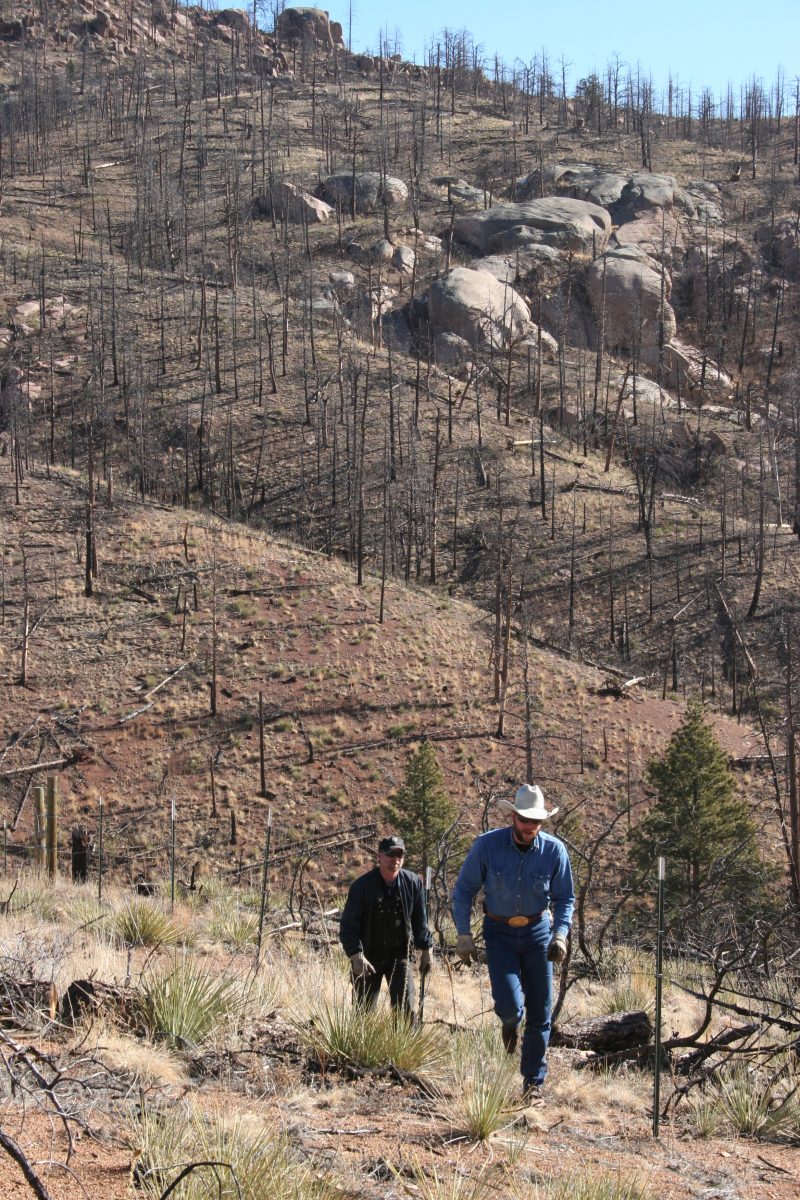
Watershed: It’s not a building for storing water
“I think that I shall never see A poem lovely as a tree.”
Hold on. No need to be confused. Despite the poetic interlude, you are still on Denver Water’s site. But April 26 is Arbor Day, and we want to show our appreciation for trees.
So why does a water utility care about trees (beyond the obvious reasons why most of us love trees)?
One simple word: watersheds.
Now that’s a word you don’t hear every day. And no, it’s not a temporary building for storing water.
When it rains, or when mountain snow begins to melt, gravity pulls the water downhill. The water comes together as runoff to form small streams, which connect with other streams to form a river.
As the runoff travels downhill, it may pass through forests, farmland and even commercial, industrial and urban areas. This is called a watershed, which directly impacts the quality of water that eventually gathers in Denver Water’s reservoirs, where we store water for 1.5 million people.
“People don’t realize how important a healthy forest environment in our watershed is to their water supply,” said Paula Daukas, former manager of environmental planning. “It’s the first, natural filtration process our source waters see.”
Healthy trees in a watershed absorb rainfall and snowmelt, slow storm runoff, recharge aquifers, sustain stream flows and filter pollutants from the air and runoff.
But, wildfires and insect infestations can harm watersheds, which highlights the need for us to take aggressive steps to protect forest health.
We can’t exactly uproot these trees and take them to the doctor, so Denver Water scientists make house calls. (Or should we call them “forest calls”?) Either way, our medical bills are insane!
From 2010 to 2017, Denver Water and the U.S. Forest Service invested more than $33 million in forest treatment and watershed protection projects in a management partnership program called, From Forests to Faucets. In 2017, the Denver Water and U.S. Forest Service partnership expanded to include the Colorado State Forest Service and the Natural Resources Conservation Service, to achieve an “all hands, all lands” approach to protecting our source water supply. With the expansion of the partnership, Denver Water committed another $16.5 million, matched dollar for dollar by the partners for a total commitment of $33 million through 2022.
“Through the From Forests to Faucets program, more than 100,000 acres in Denver Water’s priority watersheds have been treated through forest restoration and hazardous fuels reduction to reduce the risk of catastrophic wildfires," said Christina Burri, Denver Water’s watershed scientist. "Lands burned by the Hayman fire surrounding Cheesman reservoir were revegetated with over one million trees, thereby reducing erosion and sedimentation into our reservoirs.”
And because some watersheds aren’t on federal lands, Denver Water also partners with others throughout the state to maintain healthy forests on private and non-federal lands with programs like our source water protection programs.
There’s so much more to drinking water than what comes out of your tap, which is why Denver Water has a team of scientists and collaborative partnerships to ensure our watersheds are in tip-top shape.
So when you turn on the faucet to fill your glass, know you’re drinking water that was filtered largely by the forests of Colorado. Perhaps you may ponder your own poetic ode to trees, and raise your glass in gratitude to the healthy forests that make up your watersheds this Arbor Day.

